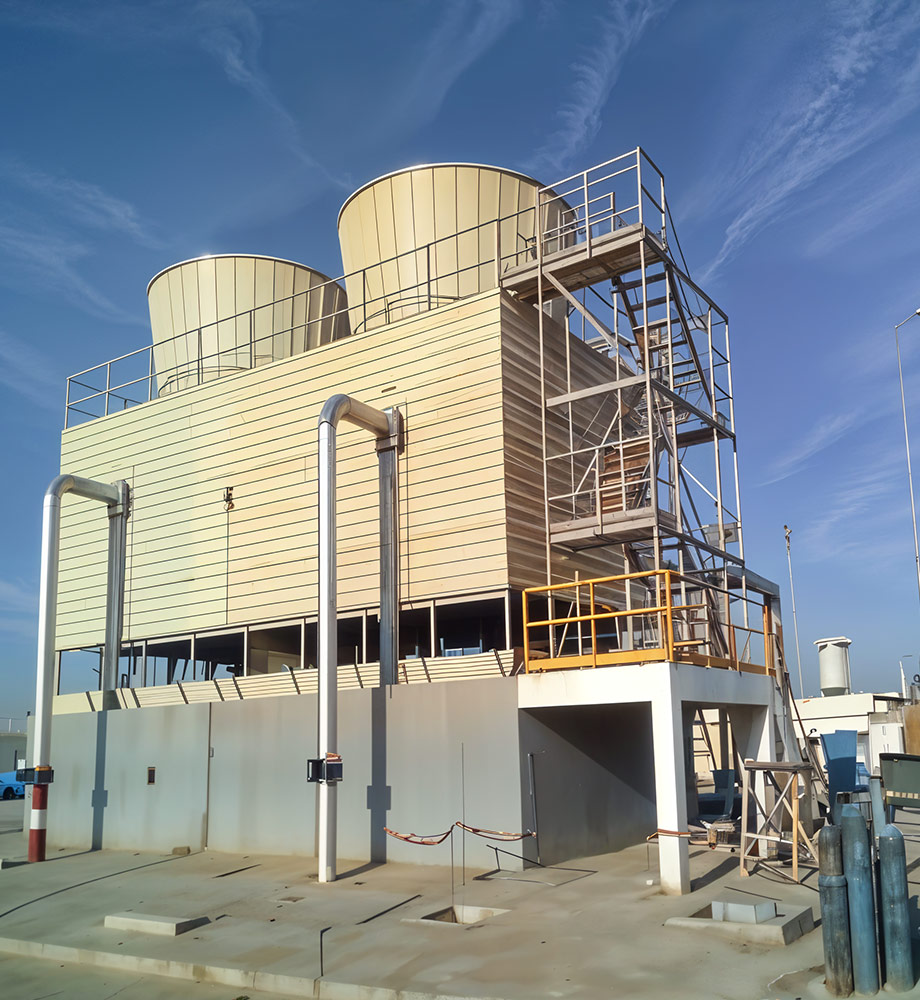Key Features
- Composite Construction: Fiberglass-reinforced resin parts (shell, louvers, fan stack).
- High Corrosion Resistance: Withstands chlorides and biocides without rust.
- Anti-Microbial Gelcoats: Many use special resins to inhibit algae/legionella growth.
- Lightweight Design: No heavy steel components (10× lighter than concrete).
- Efficient Fill Media: Special PVC/FRP-filled packs to maximize heat transfer.
- Modular Assembly: Factory-built cells or field-erected fiberglass sections.
Benefits
- Lower Operating Cost: Durable FRP means less downtime and long intervals between recoating.
- Energy Efficient: High-efficiency design with optimized drift eliminators.
- Chemical Tolerant: Can handle aggressive water chemistries that would destroy metal towers.
- Low Maintenance: No rust, no rot – typically only fan motor and belts need attention.
- Customizable: Sizes range from small indoor units to large industrial cells; can incorporate noise dampening, variable fan control, etc.
Applications
- HVAC systems (chiller condenser water cooling).
- Industrial process cooling in chemical, petrochemical, and power plants.
- Marine and offshore cooling (FRP handles salt air).
- Power generation (open cycle cooling).
- Any facility with water-cooled equipment requiring corrosion-free construction.
Technical Specifications
- Materials: FRP shells (polyester or vinylester resin), PVC or ceramic fill, polypropylene drift eliminators.
- Sizes: Cells from ~1m³ to 100s of m³ (airflow).
- Fan Types: Axial (FRP blades/steel), static vs fan-driven.
- Thermal Range: Design based on approach temperature (e.g. cooling range 5–15°C).
Unique Selling Points
- Corrosion Immunity: Perfect’s FRP towers have anti-microbial resin shells for long life.
- Lower Lifetime Cost: Energy and water-efficient operation combined with minimal upkeep.
- Versatility: FRP can be molded into large shapes (round or field-erect) that metal cannot economically match.
- Environmental Safety: No biocide leaching into surroundings; with drift eliminators, water loss and bacteria are minimized.
- Made in India: (for local suppliers) Emphasis on high-quality craftsmanship in domestic FRP tower manufacturing.

